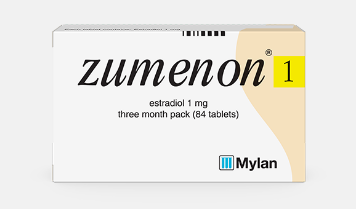Why do women have hot flushes?
Hot flushes are vasomotor symptoms (VMS) commonly occurring during menopause, which adversely affect the woman’s quality of life. Several other symptoms such as palpitations, anxiety, irritability or night sweats are commonly associated with hot flushes.
A sudden subjective sensation of heat commonly occurring during the menopausal transition in women is known as hot flushes. It is associated with cutaneous vasodilation and a reduction in core temperature.1 Hot flushes occur in approximately two-thirds of postmenopausal women and they have been described as intolerable by 10-20% of postmenopausal women.1
Subjective features of hot flushes
The subjective features of hot flushes differ from one woman to another. There is a sudden sensation of heat or warmth frequently associated with sweating, reddening of skin and palpitations. It commonly starts in the upper body and spreads upwards and downwards.1,2 It could also be associated with night sweats, mood swings, depression, nervousness, agitation, insomnia and inability to concentrate.1 There is a reduction in libido in 46% of women with hot flushes.1
Duration and diurnal variations of hot flushes
Hot flushes can occur at any time during the day or night. Hot flushes last for an average of 3 to 4 minutes and occur during menopausal transition. Hot flushes may continue for more than 1 year for most women with a median of about 4 years. While some women, may still experience hot flushes for up to and beyond 20 years of their postmenopausal life.2
Triggers and risk factors for hot flushes
Hot flushes may occur spontaneously or may be triggered by stress, alcohol, caffeine, warm drink or sudden temperature fluctuation.3
Some of the risk factors associated with hot flushes are as follows:
What is the pathophysiology of hot flushes?
Vasomotor symptoms (VMS) such as hot flushes and night sweats are frequently encountered during the menopausal transition. These symptoms are related to decreasing estradiol concentrations, which affect the temperature regulating centre. Estrogen deficiency alters the serotonergic and noradrenergic pathways, involved in temperature control.4
-
References
- 1) Stearns V, Ullmer L, Lo′pez JF, Smith Y, Isaacs C, Hayes DF. Hot Flushes. Lancet. 2002 Dec;360:1851-61.
- 2) Archer DF, Sturdee DW, Baber R et al. Menopausal hot flushes and night sweats: where are we now? Climacteric. 2011 Oct;14:515-28.
- 3) NHS. Menopause symptoms: Hot flushes. Available at https://www.nhs.uk/conditions/menopause/hot-flushes/#:~:text=They%20can%20happen%20without%20warning,smoking. Last accessed: September 2021.
- 4) Rossmanith WG, Ruebberdt W. What causes hot Flushes? The neuroendocrine origin of vasomotor symptoms in the menopause. Gynecol Endocrinol. 2009 May;25(5):303-14.

Zumenon®
Zumenon® is indicated for estrogen deficiency symptoms in postmenopausal women at least 6 months since last menses.

HRT TREATMENT NAVIGATOR
An interactive tool to help tailor individual therapy using the Viatris broad portfolio of HRT treatment options. Answer 2-6 simple questions to get an option now.
HCP Disclaimer
This website is intended for UK healthcare professionals only.
Viatris Connect is an online platform for UK healthcare professionals.
Across the website you will find news, blogs and product information.
FREE Menopause and HRT webinars available to watch by registering to Viatris Connect today
Please note that the website contains promotional and non-promotional material including educational content and resources to help you and your patients.
REGISTER NOW







